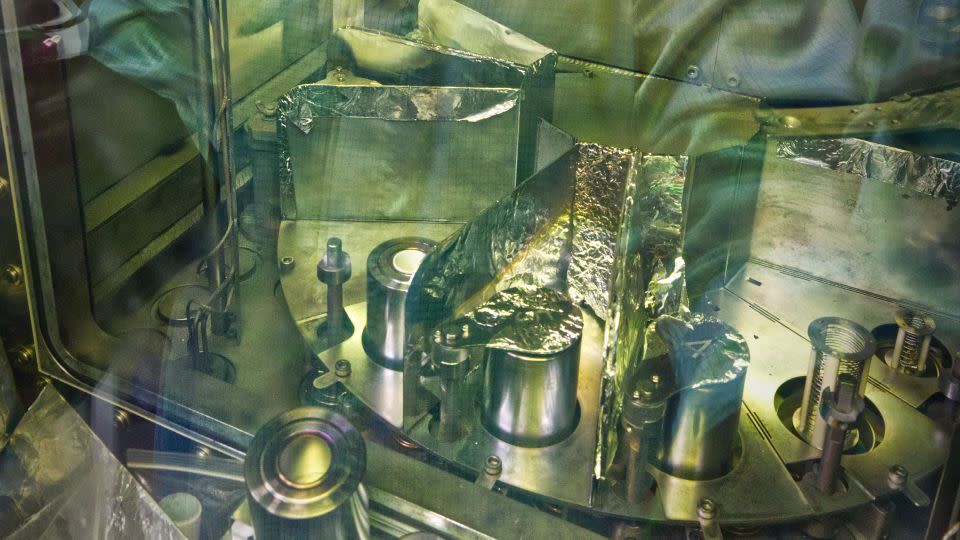A coating 100 times thinner than a human hair could be “injected” into a backpack, cell phone or car roof to harness the sun’s energy, new research shows, in a development that could reduce the world’s need for solar farms that occupy huge tracts of land.
Scientists at the University of Oxford’s physics department have developed a micro-thin, light-absorbing material flexible enough to be applied to the surface of almost any building or object – with the potential to generate up to almost double the amount of energy of current solar panels.
The technology comes at a critical time for the solar energy boom, as human-caused climate change is rapidly warming the planet, forcing the world to accelerate its transition to clean energy.
It works like this: The solar coating is made of materials called perovskites, which are more efficient at absorbing solar energy than the silicon-based panels widely used today. This is because its light-absorbing layers can capture a wider range of solar spectrum light than traditional panels. AND more light means more energy.
The Oxford scientists are not the only ones who have produced this type of coating, but theirs is remarkably efficient, capturing around 27% of the energy in sunlight. Current solar panels using silicon cells, by comparison, typically convert up to 22% of sunlight into energy.
The researchers believe that, over time, perovskites will be able to provide an efficiency of over 45%, pointing to the increase in yield they managed to achieve during just five years of experimentation, from 6% to 27%.
“This is important because it promises more solar energy without the need for silicon-based panels or purpose-built solar farms,” said Junke Wang, one of the Oxford scientists. “We can imagine perovskite coatings being applied to broader types of surfaces to generate cheap solar energy, such as the roofs of cars and buildings and even the backs of cell phones.”

At just over a micron thick, the coating is 150 times thinner than a silicon wafer used in current solar panels. And unlike existing silicon panels, the perovskites can be applied to virtually any surface, including plastics and paper, using tools such as an inkjet printer.
Globally, solar panel installations have soared, growing 80% in 2023 compared to 2022, according to Wood Mackenzie, a company specializing in data and analytics for the clean energy transition. Solar power was the fastest-growing source of electricity in 2023 for the 19th year in a row, according to climate think tank Ember’s 2024 Global Electricity Analysis.
One of the main drivers of this boom is the falling cost of solar energy, which has now become cheaper to produce than any other form of energy, including fossil fuels. Another important factor fueling the rise of solar energy is its increasing efficiency in converting solar energy.
But onshore solar farms take up a lot of land and are often at the center of conflict between the agricultural industry and the governments and companies behind renewable installations.
The Oxford researchers say their technology could offer a solution to this problem, while also reducing energy costs. But Wang noted that the research group is not advocating an end to solar farms.
“I wouldn’t say we want to eliminate solar farms because obviously we need a lot of areas or surfaces to generate a sufficient amount of solar energy,” he told CNN.
A persistent problem with perovskites, however, is stability, which has prevented their developers from commercializing the technology. Some coatings in laboratory environments have dissolved or broken down over time, so they are considered less durable than current solar panels. Scientists are working to improve its lifespan.
Henry Snaith, lead researcher on the Oxford team, said their work has strong commercial potential and could be used in industries such as construction and car manufacturing.
“The latest innovations in solar materials and techniques demonstrated in our labs could become a platform for a new industry, making materials to generate solar energy more sustainably and cheaply using existing buildings, vehicles and objects,” he said.
Snaith is also the head of Oxford PV, a spin-off company from Oxford University Physics, which recently began large-scale manufacturing of perovskite solar panels at its factory in Germany.
For more news and newsletters from CNN, create an account at CNN.com

















/cdn.vox-cdn.com/uploads/chorus_asset/file/23968388/226053_energy.0.jpg?w=300&resize=300,300&ssl=1)














